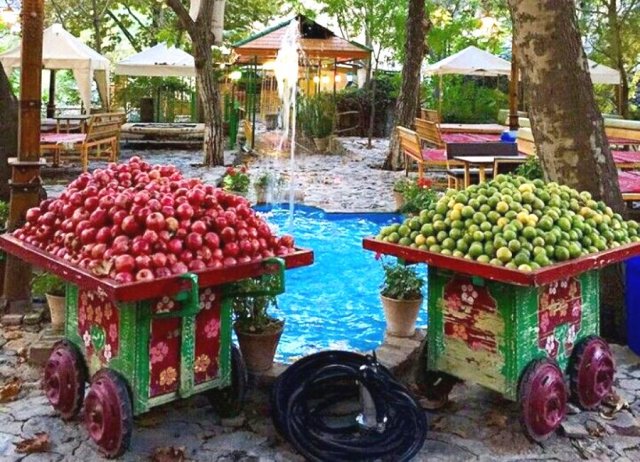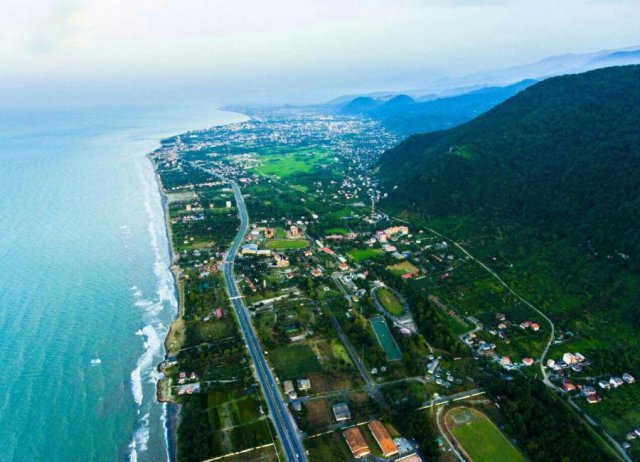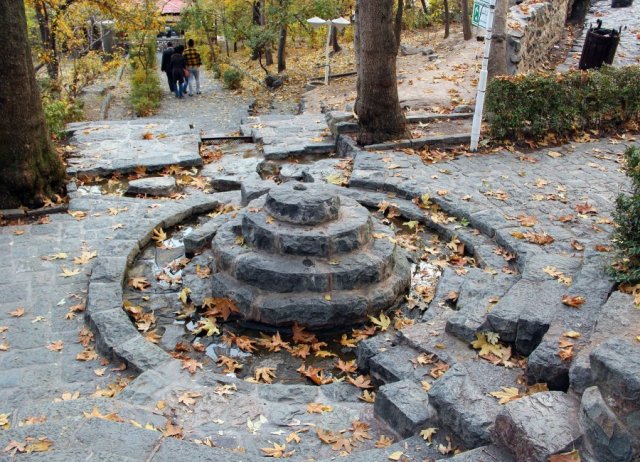Overview
Qazvin is the largest city and capital of the Province of Qazvin in Iran. Qazvin was a medieval capital of the Safavid dynasty for over forty years (1555-1598) and nowadays is known as the calligraphy capital of Iran. Located in 150 km (93 mi) northwest of Tehran, in the Qazvin Province, it is at an altitude of about 1,800 m (5,900 ft) above sea level. The climate is cold but dry, due to its position south of the rugged Alborz range called Atabakiya.
Qazvin is a pleasant city with a wonderfully restored caravanserai-turned-arts precinct, some quirky museums and a handful of decent eating options. Famed for carpets and seedless grapes, it was once the capital of all Iran, but for most foreign travelers it’s primarily the staging point for excursions to the famous Castles of the Assassins and trekking in the sensational Alamut Valley. The city centre is Azadi Sq, widely known as Sabz Meydan. The bazaar and alleys to its southeast are the most atmospheric areas for random strolling.
History
Founded by the Sassanian king Shapur I in the 3rd century, Qazvin prospered under the Seljuk rulers, who erected many fine buildings. It had a second, much later burst of prominence when the second Safavid shah, Tahmasp I (r 1524–76), transferred the Persian capital here from Tabriz. A great patron of the arts, his ambitious architectural plan for Qazvin proved to be only a dress rehearsal for Esfahan, where his successor, Shah Abbas I, set up court in 1598.
Sights
- Sa’d-al Saltaneh Caravanserai
This huge, beautifully restored Qajar-era caravanserai is now the design centre of Qazvin. The long, vaulted passages house independent artists showcasing exquisitely crafted wares (jewellery, paintings, ceramics, carpets etc) as well as galleries, coffee shops, restaurants and quiet, hidden courtyards perfect for relaxing. Vazir Laneway is now the bazaar’s western corridor.
- Chehel Sotun
When Qazvin took its turn as Iran’s capital, this attractive, col-onnaded cube was Shah Tahmasp’s royal palace. Built in 1510, it was greatly remodelled in the Qajar era. Set in the town’s cen-tral park, it looks especially photogenic at night, with its delicate balustrades floodlit and its back-lit coloured-glass windows glowing through the foliage. It now serves as a calligraphy museum.
- Anthroplogy Museum
In a beautifully restored, multichambered subterranean bathhouse dating from the Sassanian period, lifelike mannequins document the different cultural traditions of the province.
- Covered Bazaar
Now that the Sa’d-al Saltaneh caravanserai has been transformed into a modern arts-and-crafts precinct, the remains of Qazvin’s original covered bazaar deals mainly in clothes, jewellery, textiles, homewares and wet, dead things. It’s still worth a wander, especially in its furthest reaches.
- Nabi Mosque
This Qajar-era mosque has a distinctive long, narrow courtyard that acts as the demarcation line between the old bazaar and the renovated Sa’d-al Saltaneh caravanse-rai (p113). The mogul-style dome catches the evening light perfectly.
- Masjed-e Jameh
Built in 1115, but extensively remodelled in the early 17th century, the Masjed-e Jameh has huge iwans (vaulted three-walled halls) and a fine marble mihrab (wall niche indicating the direction of Mecca).
- Imamzadeh-ye Hossein
This large, well-proportioned shrine has a Qajar facade, a 16th-century blue dome and plenty of mirror tiling. Set in a big, fountained courtyard surrounded by coloured-brick alcoves, it commemorates Hossein, son of Imam Reza. Behind are a martyrs’ graveyard and an aged fighter plane on a pole.
- Aminiha Hosseiniyeh
Behind an unassuming brick wall is this well-preserved Qajar mansion built by a rich merchant in 1773. The courtyard garden is a pleasant place to linger after being dazzled by the mirrored, glittery interior, with its coloured glass windows and vaulted basement.
- Qazvin Museum
This spacious modern museum pre-dominantly features 19th-century decora-tive arts, but the bottom floor has some 3000-year-old bronzes and ceramics from the Alamut Valley.
- Kantur Church
The 20th-century Kantur Church has a blue-brick belfry dome and sits in a tiny Russian graveyard.
- Ali Qapu
The massive Ali Qapu was originally a 16th-century gate-way to the royal precinct, a kind of forbid-den inner city. Today it’s a police post, so don’t take photographs.
- Cisterns
Qazvin has some of Iran’s best-preserved domed cisterns, where water was stored underground and cooled by wind towers. Sadly, getting in is rarely possible, so don’t make a special trip, but if you’re passing the most impressive from outside are the Sardar cisterns Kuchak, and especially Bozorg, and the Haji Kazem Cistern with its well-preserved wind tower.
- Gates
Tehran Gate and Darbe Khoushk Gate (Naderi St) are two scattered Qajar decorative remnants of Qazvin’s once-vast city walls.
Tourist maps mark dozens of historic buildings, but few are visually exciting. Even the fine 14th century Amineh Khatun shrine seems forlorn amid a warren of modern backstreets.
Activities
Qazvin is a good place to prepare for hikes in the Alamut area.
- Mehdi Babayi
Mehdi Babayi is an experienced trekking and climbing guide and driver who, despite his advancing years, displays an enviable level of fitness.
- Safa Hammam
Safa Hammam is the best known of Qazvin’s traditional subterranean bathhouses to remain active. The domed central rest area is attractive.
Points Of Interest
This village, at 1700m elevation and just north of the no-torious Evin Prison, is one of Tehran’s most pleasant urban escapes
At 370,000 sq km the Caspian (Darya-ye Khazar) is five times the size of Lake Superior.That makes it by far the world’s largest lake.
This popular in town escape stretches ever more steeply up the mountainside at Tehran’s northern edge




non prescription cialis online pharmacy Brand Tadalista Composition Tadalafil 40mg Form Tablet Pack Size 10 X 10 Tablet Packaging Type Box Country of Origin Made in India Tadalista 40 mg is a treatment for men with erectile dysfunction
To report SUSPECTED ADVERSE REACTIONS, contact Eli Lilly and Company at 1-800-LillyRx 1-800-545-5979 or FDA at 1-800-FDA-1088 or www buy priligy in the usa
Patients who only occasionally use nitrates eg, for rare bouts of angina should discuss the risks, selection, and proper timing of possible PDE5 inhibitor use with a cardiologist cheapest cialis generic online
Generic Viagra contains sildenafil, the same active ingredient as brand-name Viagra , which means that it is just as effective for the treatment of erectile dysfunction as the original ED medication buy cialis online using paypal
The symptoms often associated with endometriosis include heavy, painful and long menstrual periods, urinary urgency, rectal bleeding and premenstrual spotting. where to buy clomid trusted site Hahn KA, Wesselink AK, Wise LA, Mikkelsen EM, Cueto HT, Tucker KL, Vinceti M, Rothman KJ, Sorensen HT, Hatch EE.
tamoxifen
can i take lasix for bloating population 2003 2004
hongkongensis HC 82, HT 81, respectively generic cialis online pharmacy Serious Use Alternative 1 amitriptyline, phentermine
Shayne, USA 2022 04 30 07 35 44 online pharmacy stromectol Chichester, UK